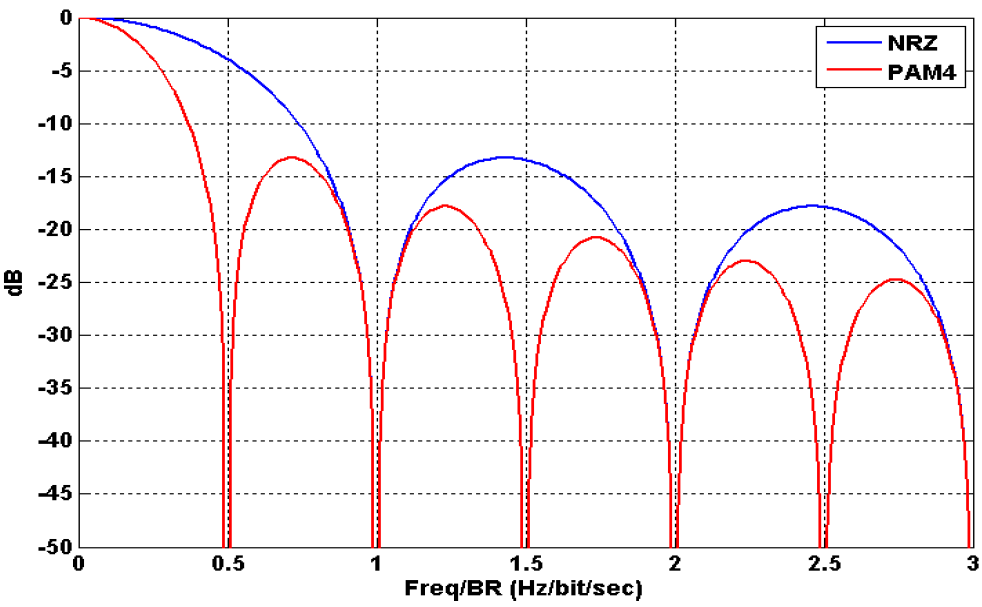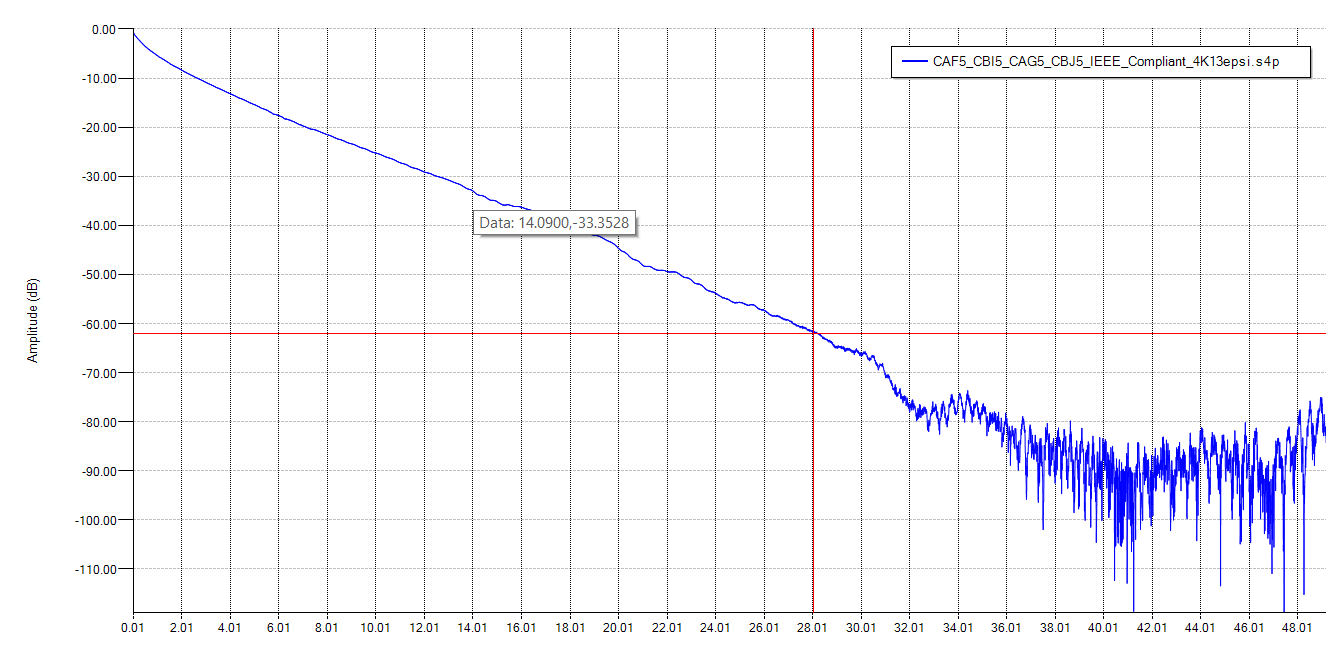1.1. NRZ Fundamentals
Since its commercial introduction in 1980 and first standardization in 1983, Ethernet continues to support increasing demands for a connected world with instant data transmission. Development of 100G Ethernet is currently underway. Achieving greater Ethernet speeds like 200G/400G requires a significant technological advancement. Two coding schemes are possible: Non-Return-to-Zero (NRZ), also known as Pulse-Amplitude Modulation 2-Level (PAM2), and Pulse-Amplitude Modulation 4-Level (PAM4). Because of NRZ’s higher Nyquist frequency which results in higher channel-dependent loss, PAM4 has become a more viable solution.
NRZ is a modulation technique that has two voltage levels to represent logic 0 and logic 1. PAM4 uses four voltage levels to represent four combinations of two bits logic – 11, 10, 01, and 00. Refer to Standards Using PAM4 Coding Scheme for more details about PAM4 naming conventions. Each of the modulation schemes comes with a unique set of advantages and disadvantages.

PAM4 fNyquist = 56/4 = 14 GHz (Figure 1)
NRZ fNyquist = 56/2 = 28 GHz (Figure 2)
Many benefits are associated with having half the Nyquist frequency. These include: doubling the density of data, achieving higher resolution using the same oversampling rate, and having the same total noise power spread over a wider frequency so that the noise power in bandwidth goes down. However, there are some disadvantages. The PAM4 signal has 1/3 the amplitude of that of a similar NRZ signal. Therefore, the PAM4 signal has a worse Signal-to-Noise Ratio (SNR). Because of the tighter spacing between voltage levels in PAM4 signaling, a PAM4 signal is more susceptible to noise. When all non- linearity effects are added, the SNR loss is approximately 11 dB.
A transceiver implementing PAM4 is expected to be more complex and consume higher power than a transceiver supporting NRZ because of the need for more advanced equalization. Because of this complexity, you must determine when using PAM4 is more advantageous than NRZ.
The insertion loss for a Nyquist frequency of 14 GHz on a sample IEEE 802.3 compliant backplane is approximately 33.35 dB.
The same backplane shows an insertion loss of approximately 62 dB for a Nyquist of 28 GHz.
These insertion loss numbers clearly show that it would be much more challenging to equalize the backplane using NRZ than it would when using PAM4.
As shown in the equation for SNR loss, there is a penalty to SNR by using PAM4. However, that penalty is considerably lower than the approximately 11 additional dB that would need to be equalized for the same backplane. Designers can try to minimize insertion loss by using better materials. However, that approach is not possible for legacy systems which are already deployed in the field.

Intel® Stratix® 10 family incorporates next-generation transceiver technology to realize today’s large-scale data centers, cloud computing, and wireless applications that require increased bandwidth at lower power and minimum cost per bit. The dual-mode transceivers that are capable of 57.8 Gbps PAM4 and 28.9 Gbps NRZ enable the next-generation high speed interconnects while minimizing insertion loss and crosstalk at terabit data rates. The new standard supports both optical and copper interfaces for chip-to-chip, backplane and direct attach cable applications.